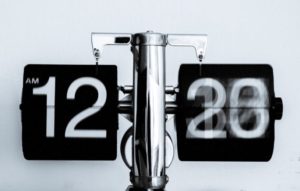
Most social media users don’t worry about optimal timing, they simply post when they want to. This may mean posting images to Facebook or Instagram right after taking the picture or tweeting an idea as soon as it pops in their head. Sometimes to save data, users wait to post until they have Wi-Fi. For most social media users this is fine because most users are using social media for fun, but if you’re using social media to promote yourself, your business or anything else, optimal timing is very important.
The truth is most of your audience won’t see what you post on social media. This is partly due to algorithms and partially due to the sheer volume of posts on social media and messaging platforms. Algorithms curate our newsfeeds on sites like Facebook to make sure our newsfeeds stay interesting to us. These algorithms consider source and engagement to decide what will be relevant to who and engagement immediately after posting helps determine the relevancy of your posts. On platforms like Twitter, a fresh post has a lifespan of roughly 20 minutes before it’s pushed lower and lower in newsfeeds as thousands of new posts are tweeted. By posting at unpopular, non-optimal times you risk your posts not being seen.
Posting at optimal times basically means posting when your content is most likely to be seen by the right eyes. For example, if you’re promoting a cookbook on social media, posting at 3am means your post is unlikely to be seen by your audience as most people aren’t on Instagram at that hour looking for recipe ideas. Posting when your target audience may be commuting to work, eating their lunch, or any other time your target audience may be scrolling through their Instagram, Twitter, or Facebook newsfeeds would get your post much more attention, hopefully more engagement, and maybe even a few cookbook sales.
Planning when to post and how often also helps in creating a strong strategy. If you know you want to tweet five times every Thursday and pre-plan when and what those tweets will be it’s more likely that you will follow through and that your effort will have maximum effect.
Of course, the best times to post for each platform can vary, as does frequency of posting. For example the times when most of your followers are on Twitter may not be the same as when your Instagram followers are online. Different platforms attract slightly different audiences and are used differently so it’s important to look at peak posting times for each platform.
So how do you find your best times to post? Start by thinking about when you use social media. Do you scroll through Instagram on your lunch break? Do you check out Twitter while waiting to pick up your kids after school? When you use social media can be a good indicator of when your audience is using theirs. (Of course you should also consider time zones, as your 3pm isn’t the same as everyone else’s.)
There are also lots of tools to help determine the best time to post. Facebook Insights provides lots of information on when your followers are on Facebook, and tools like Buffer provide optimal timing suggestions. There is also a bit of trial and error when finding your best posting times. Maybe posting at 3:15 is better than 3:00. Also consider times to avoid posting, like when post people are asleep or on major holidays when many people are busy with family celebrations.
I’ll leave you with this: If nobody sees your tweet, was it worth the time and effort you put into creating it?
